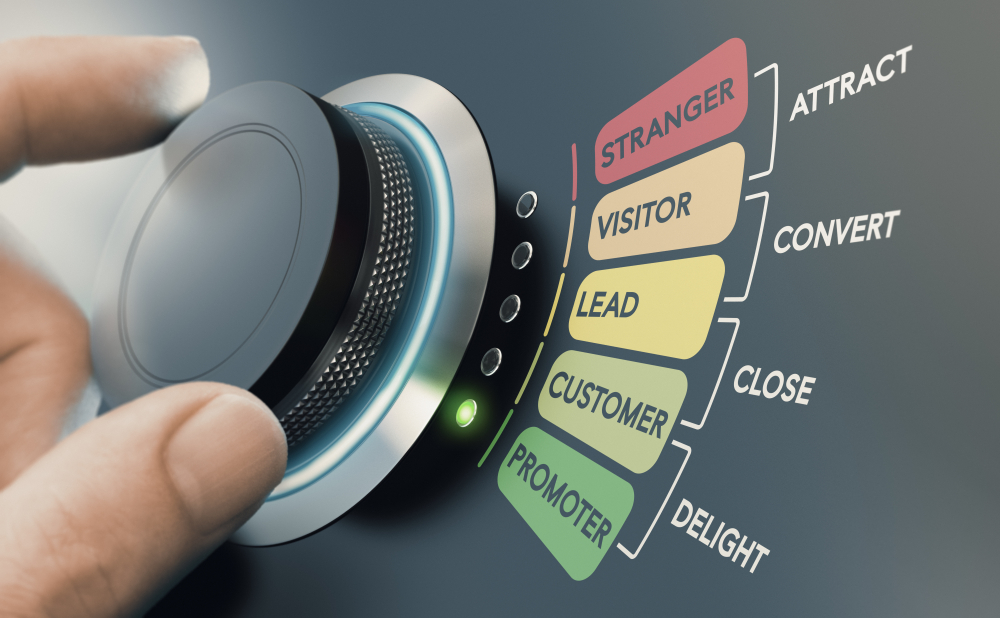Success in real estate often hinges on a Realtor’s ability to not only generate leads but also to nurture those leads effectively. Lead nurturing, the process of developing relationships with potential clients at every stage of the sales funnel, is a critical component of any successful real estate business.
A REALTOR® is a member of the National Association of REALTORS®. In this article we use the terms realtor or realtors without the ® mark to accommodate common search terms. The author, Scott Phillips, and Realoq are members of the National Association of REALTORS®.
The Importance of Lead Nurturing for Realtors
Lead nurturing is not just a buzzword in the real estate industry; it’s a proven strategy that can yield significant benefits for Realtors who embrace it. By consistently engaging with leads and providing value at every touchpoint, Realtors can build trust, credibility, and top-of-mind awareness with potential clients. This, in turn, can lead to higher conversion rates, as nurtured leads are more likely to choose a Realtor they know and trust when they’re ready to buy or sell a property.
The benefits of lead nurturing extend far beyond the initial conversion. By continuing to nurture client relationships even after the sale, Realtors can foster a sense of loyalty and encourage repeat business and referrals. When competition is fierce, a robust lead nurturing system can be a key differentiator, allowing you to stand out from the crowd and build a thriving, sustainable business.
Best Methods for Realtors to Nurture Leads
What are the most effective ways for Realtors to nurture their leads? While there’s no one-size-fits-all approach, there are several key strategies that have proven successful for many Realtors:
Personalized Email Campaigns
Email is one of the most powerful tools in a Realtor’s lead nurturing arsenal. By segmenting leads based on their interests, behaviors, and stage in the sales funnel, Realtors can create targeted email campaigns that deliver relevant, valuable content to each lead. This could include everything from personalized property recommendations and market updates to home maintenance tips and community event invitations. The key is to tailor the content to the lead’s specific needs and interests, making them feel seen, heard, and valued.
Social Media Engagement
Social media platforms like Facebook, Instagram, and LinkedIn offer a direct line of communication to their leads. By regularly posting engaging content, responding to comments and messages, and participating in relevant online communities, Realtors can stay top-of-mind with their leads and build deeper, more authentic relationships. Social media also provides an opportunity to showcase a Realtor’s personality, expertise, and unique value proposition, helping them to stand out.
Content Marketing
Content marketing is another powerful lead nurturing strategy that involves creating and sharing valuable, relevant content with leads at every stage of the sales funnel. This could include blog posts, videos, podcasts, infographics, and more, all designed to educate, inform, and engage leads on topics related to real estate, home ownership, and the local community. By consistently providing value and establishing themselves as a trusted resource, Realtors can keep leads engaged and moving through the sales funnel, even if they’re not yet ready to buy or sell.
Direct Communication
While digital communication is increasingly important in today’s real estate landscape, there’s still no substitute for direct, one-on-one interaction with leads. Whether it’s through phone calls, in-person meetings, or personalized video messages, taking the time to connect with leads directly can help Realtors build stronger, more authentic relationships. These interactions provide an opportunity to listen to the lead’s needs, answer their questions, and offer tailored advice and support, all of which can help to build trust and move the lead closer to a decision.
Step-by-Step Process of Realtor Lead Nurturing

Now that we’ve explored some of the best methods for lead nurturing, let’s break down the process into a step-by-step guide that Realtors can follow:
Identifying Potential Leads
The first step in any lead nurturing process is to identify potential leads and understand where they fit within the sales funnel. This could include leads generated through online inquiries, open houses, referrals, or other marketing efforts. By categorizing leads based on their level of interest and readiness to buy or sell, Realtors can tailor their nurturing approach accordingly.
Initial Contact
Once a lead has been identified, the next step is to make initial contact and establish a positive first impression. This could involve a personalized email, phone call, or social media message, depending on the lead’s preferences and behavior. The key is to be prompt, professional, and focused on the lead’s needs, rather than pushing for an immediate sale.
Consistent Follow-Up
After the initial contact, it’s important to maintain consistent communication, providing value and staying top-of-mind without being intrusive. This could involve a mix of automated email campaigns, personalized check-ins, and targeted content sharing, all designed to keep the lead engaged and moving through the sales funnel. The key is to find a balance between persistence and respect for the lead’s time and preferences, always prioritizing their needs over the desire for a quick sale.
Tailoring Communications
As the lead progresses through the sales funnel, it’s important to continue tailoring communications based on their behavior, feedback, and expressed interests. This could involve adjusting the frequency or type of outreach, providing more specific property recommendations or market insights, or offering additional resources and support to help the lead make an informed decision. By staying attuned to the lead’s evolving needs and adapting the nurturing approach accordingly, Realtors can demonstrate their value and build deeper, more trusting relationships.
Moving Leads through Your Sales Funnel
The ultimate goal of lead nurturing is to guide leads through the sales funnel, from initial awareness to active consideration and, ultimately, to a successful sale or purchase. This requires a strategic, patient approach that prioritizes the lead’s needs and timeline, rather than rushing them towards a decision. By consistently providing value, building trust, and staying top-of-mind, Realtors can position themselves as the clear choice when the lead is ready to take action.

Recovering Cold Leads Through Lead Nurturing
Even the most effective lead nurturing process will inevitably result in some leads going cold. Whether due to a change in circumstances, a lack of immediate need, or simply getting lost in the shuffle, cold leads can be a frustrating reality for Realtors. However, with the right approach, it is possible to re-engage these leads and bring them back into the fold.
The first step in recovering cold leads is to identify the reasons for their disengagement. This could involve analyzing past interactions, looking for patterns or triggers that may have caused the lead to lose interest or disengage. By understanding the root cause of the issue, Realtors can develop a tailored re-engagement strategy that addresses the lead’s specific needs and concerns.
This could involve a renewed communication effort, such as a personalized email campaign or a targeted social media ad, designed to re-capture the lead’s attention and remind them of the Realtor’s value. It could also involve offering new or additional value, such as a free home valuation, a market report, or an invitation to an exclusive event, to entice the lead to re-engage.
Not every cold lead will respond to re-engagement efforts, and it’s important for Realtors to know when to move on. By monitoring responses and adjusting tactics based on lead feedback, Realtors can focus their efforts on the leads that are most likely to convert, while avoiding wasting time and resources on those that are truly unresponsive.
Realtor Lead Nurturing FAQs

How often should I follow up with leads without being intrusive?
The frequency of follow-up will depend on the lead’s individual preferences and behavior, as well as their stage in the sales funnel. A good rule of thumb is to start with a higher frequency of contact (e.g. weekly) for new leads, and then gradually decrease the frequency as the lead progresses through the funnel. It’s important to always prioritize the lead’s needs and preferences, and to adjust the frequency accordingly based on their feedback and engagement.
What types of content are most effective in lead nurturing?
The most effective types of content will vary depending on the lead’s specific interests and needs, as well as their stage in the sales funnel. However, some general categories of content that tend to perform well in lead nurturing include educational blog posts or videos, personalized property recommendations, local market updates, home maintenance or design tips, and community event or resource guides. The key is to provide value that is relevant and useful to the lead, rather than purely promotional.
Can automation tools be used in lead nurturing, and how?
Automation tools can be a powerful aid in lead nurturing, particularly for managing larger volumes of leads or executing more complex nurturing campaigns. Customer relationship management (CRM) systems, email marketing platforms, and social media scheduling tools can all help Realtors to streamline and scale their lead nurturing efforts. It’s important to use these tools strategically and not to rely on them at the expense of personalized, one-on-one communication.
How can I personalize my approach for different types of leads?
Personalizing the lead nurturing approach requires a deep understanding of each lead’s unique needs, preferences, and behavior. This could involve segmenting leads based on factors like their budget, timeline, property preferences, or communication style, and then tailoring the nurturing approach accordingly. It could also involve using data and insights from past interactions to inform future outreach, such as referencing a lead’s previously expressed interests or concerns in a personalized email or phone call.
What are the signs that a lead is ready to move to the next stage?
A lead is ready to progress in your sales funnel varies depending on the individual lead and the specific stage they’re in. Some general indicators could include increased engagement with nurturing content (e.g. higher email open rates or social media interactions), more frequent or specific inquiries about properties or the buying/selling process, or an expressed desire to meet in person or discuss next steps. By staying attuned to these signs and responding promptly and appropriately, Realtors can help to guide leads smoothly through the funnel.
Punch Up Your Realtor Lead Nurturing
Effective Realtor lead nurturing is no longer a luxury, but a necessity. By prioritizing consistent, personalized engagement with leads at every stage of the sales funnel, Realtors can differentiate themselves from the competition, build stronger client relationships, and ultimately, achieve greater success and longevity in their careers.
Developing and implementing a robust lead nurturing system is not a one-time effort, but an ongoing process that requires continuous refinement and adaptation. By staying up-to-date with the latest tools, trends, and best practices, and always prioritizing the needs and preferences of their leads, Realtors can create a powerful lead nurturing machine that drives sustainable growth and success.
Whether you’re a seasoned real estate veteran or a new agent just starting out, I encourage you to embrace the power of lead nurturing and make it a core part of your business strategy. With the right approach and a commitment to providing genuine value to your leads, you can build a thriving, rewarding career in real estate, one nurtured relationship at a time.
At Realoq, we are committed to providing a platform that
empowers agents to succeed without the burden of upfront fees.


